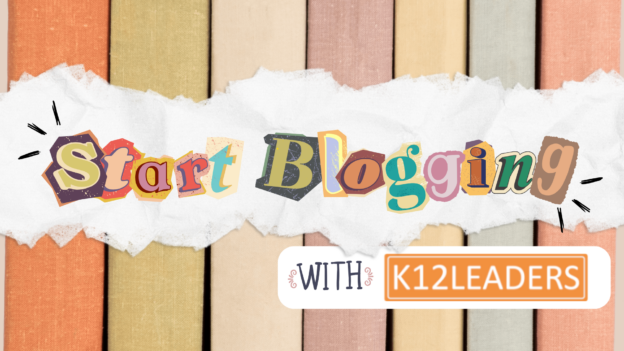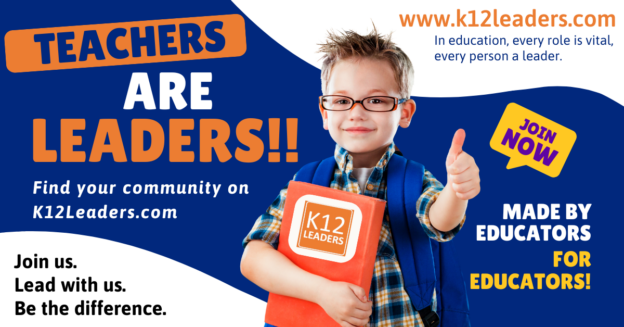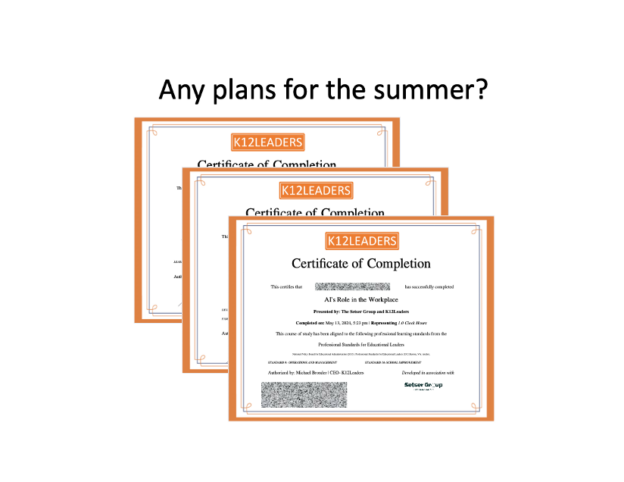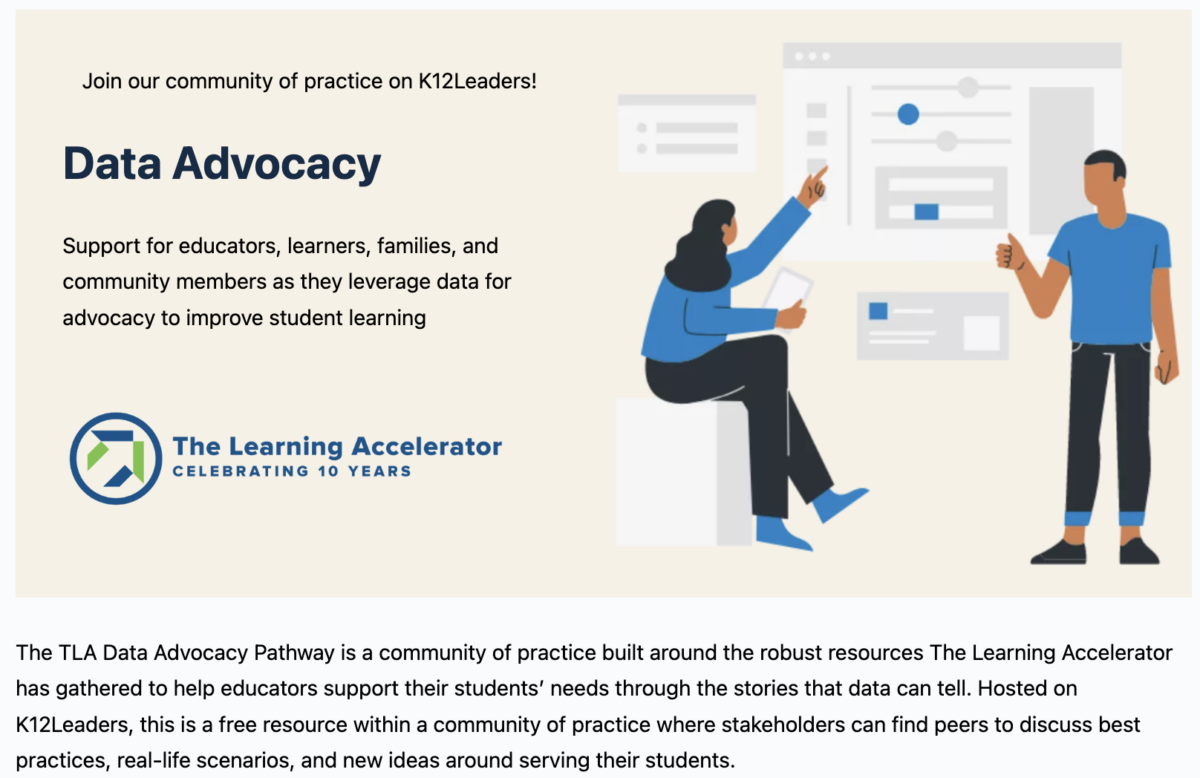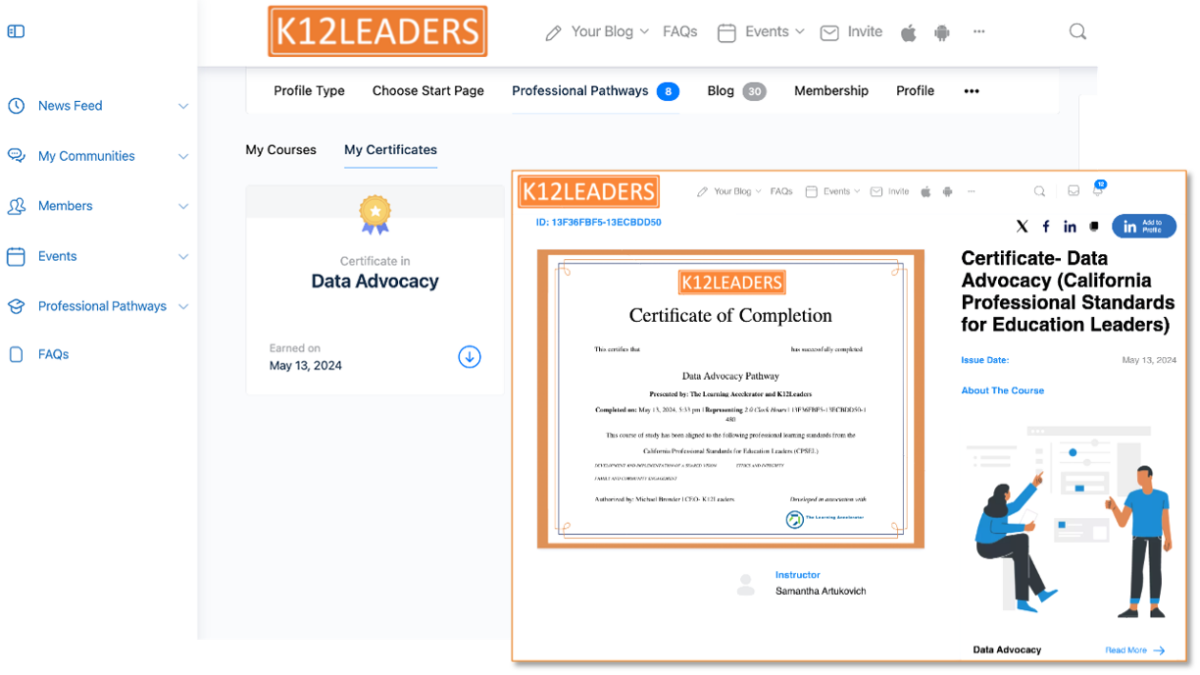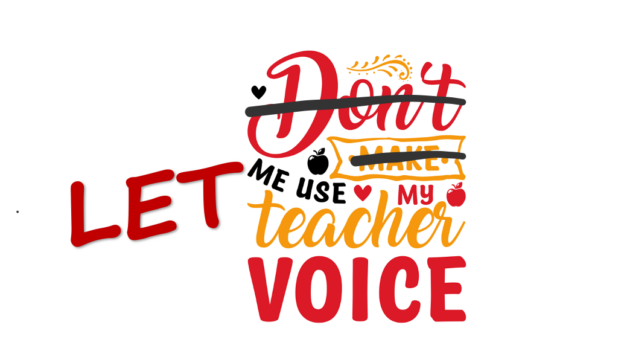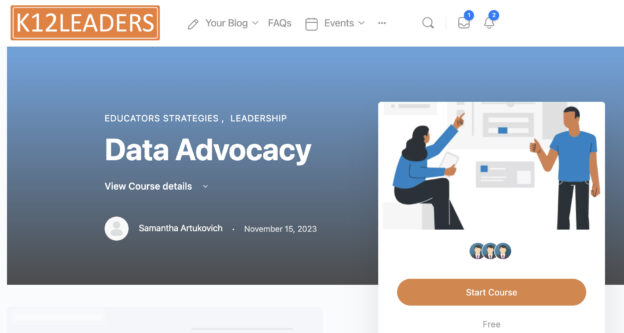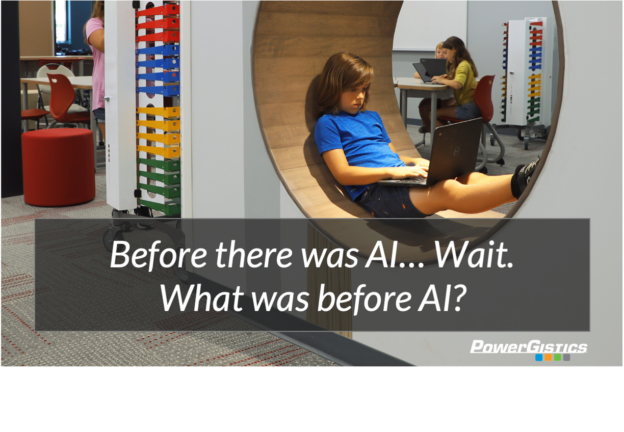It’s sometimes hard to remember that education technology was deep and robust before AI hit the scene in 2023. While we continually hear about how AI is going to directly affect the classroom, it’s also important to understand how it will integrate with the existing ed-tech ecosystem.
Some of the possibilities are truly amazing, and others should be explored with an eye on student (and teacher) privacy. In some cases, the existing ecosystem may actually magnify the impact AI can have while mitigating some of the risks we’re just starting to understand.
Education institutions share a common mission — to provide their students with the knowledge and skills that form the foundations of a successful future. Education technology (ed-tech) is an important driver in reaching this goal, and its advancement is opening the doors to exciting new ways to use it in today’s classrooms. Explore what ed-tech is, how it creates value, and how it’s evolving in a world increasingly influenced by AI.
Remember Ed-tech?
Ed-tech is the collective media and tools that help facilitate knowledge communication, delivery, and exchange. This broad definition can refer to solutions like software, smart devices, and electronics. These empower school faculty to teach more effectively and remotely, promote better knowledge retention, create engaging student experiences, and run more efficiently.
6 Ways Ed-Tech Enhances Education
Learners today expect an interactive experience beyond passive learning through sitting in a live classroom and listening to a lecture. Ed-tech enables faculty to prepare students for future workplaces by providing exciting new ways of interactive learning and engagement.
Among the many benefits of tech in the classroom are:
1. It Supports Diverse Learning Styles
Every student’s needs are unique, and each learns differently. These realities can make it challenging for your workforce to meet diverse demands.
Modern technology can support learning styles and needs in several ways, including online platforms, interactive learning tools, and collaborative experimentation. These solutions empower your teaching staff to deliver materials through different mediums. They also allow students to engage in ways that work for them. For example, an educator can leverage technology to permit students to demonstrate their knowledge through different options. This approach creates more customized experiences while still providing an education of meaningful benefit.
2. It Fosters Better Communication and Collaboration
Modern technology makes communication easier for your workforce, students, and parents. Pupils can readily make suggestions or ask questions that they may be too shy to pose in class by using electronic tools. Teachers and parents can use email for routine communication and video tools for more convenient parent-teacher conferences.
Technology solutions are also ideal for nurturing collaboration between students. Pupils can work together on projects through platforms like text messaging, videoconferencing, and online discussion forums. Existing and upcoming programs can even help your teachers track individual contributions and group effort.
3. It Prepares Pupils for Their Futures
Today’s businesses increasingly rely on technology to power and improve their operations. Whether your future graduates will operate costly equipment or design the next space shuttle, savvy tech skills are essential for their success. Your campus’s classrooms are the ideal places for students to get the introductory skills they need to be confident technology users in the workforce.
4. It Creates an Engaging Experience
Technology and education combine to create more interactive learning experiences. In turn, users have more involvement with the tools they’re using. This association can lead to better knowledge retention, increased subject interest, and higher lesson engagement.
5. It Offers Enhanced Learning
Technology can make learning more engaging and interactive, improving students’ understanding and retention of the information. Students can also access a vast amount of information and resources online, expanding their knowledge beyond traditional textbooks and learning deeper research skills for finding authoritative, credible sources.
6. It Accommodates Inclusivity
Technology can assist students with disabilities and special educational needs, making education more accessible to a wider range of learners. Distance learning curricula and assistive technology such as speech-to-text, subtitles and captions, and keyboard and mouse adjustments can benefit learners with and without disabilities for more advantageous classroom experiences.
Top 10 Trends for the Use of Technology in Education
[the_ad id=”51195″]
The tech environment is dynamic, with innovative new solutions coming to the market daily. Harnessing all the benefits these tools offer means staying on top of trending uses for them. Below are the top 10 ed-tech trends to know to make the most informed buying decisions for your campus.
1. Artificial Intelligence
Artificial intelligence (AI) and machine learning (ML) applications continue to grow. Experts anticipate the market to reach $1,345 billion by 2030, with education playing a key role as industry demand increases.
Your teachers will save time using sophisticated tools to automate tasks and enhance the delivery of course material. AI can help them grade objective exams or generate a lesson plan outline in moments. They can then focus on other tasks like completing continuing education requirements instead.
AI is equally beneficial to your entire student body. The technology can help improve their writing and simplify complex topics into easier-to-understand material. AI tools are also ideal for detecting learning gaps and creating personalized, correctly paced learning plans to fill them. This approach allows students to receive the precise help they need to succeed, fostering their motivation and boosting their academic performance.
The typical concerns around AI in the classroom have to do with the authenticity of student work and efficacy of their learning, and potential bias as it recognizes patterns. While there are some answers to those concerns, many others remain.
What is not as well understood are how AI engines work with student data, and how they will need to respect existing laws regarding FERPA Student Identifiable Information, and CIPA.
The Department of Education has published guidelines regarding both the benefits and risks of AI in education, but we should expect this to be an ongoing conversation, not a static position.
2. Cloud Computing
Many of today’s education technology trends begin with cloud computing. The Cloud has become almost transparent, and it’s hard to recall a time when we were concerned with how much disk space we were using. While transitioning assets to the cloud enables access to school resources from anywhere with any connected device, AI also depends on the cloud for storing the vast amount of data it relies on. For a school or district, the cloud remains ideal for:
– Students: Pupils can efficiently complete lessons, collaborate on projects, communicate with their teachers, and access digital textbooks from anywhere, 24/7.
– Faculty: Educators can quickly post and grade assignments, email or conference with parents, and track student attendance and progress.
– Parents: Parents can conveniently monitor grades, communicate with school staff, and digitally sign and submit required forms.
– Administrators: Senior-level staff can review curricula, create and approve budgets and expenditures, and easily manage faculty.
– Employees: The operational workforce can quickly request tools and equipment, manage their benefits, or complete required computer-based training.
3. Online Learning
Online learning — also called e-learning — first debuted in the 1960s through the University of Illinois when it offered on-premise students instruction through linked computer terminals. By 1984, the University of Toronto began offering foundational courses, and the University of Phoenix became the first fully distance-learning college a few years later.
As internet connectivity and home-based devices became more popular during the 1990s, more e-learning opportunities began to appear. These programs supported asynchronous learning, where students complete work around their schedules rather than during a defined classroom time. This approach gives pupils more control over their assignment timing and allows them to develop time management skills. The onset of the pandemic only reinforced the demand for instruction options capable of keeping pace with the many shifting needs.
Today’s technology allows educators to meet students’ learning objectives through smartphones, computers and tablets. Modern solutions let educators use podcasts, videos, simulations and more to deliver captivating and engaging lessons. High configurability and affordability of these formats help ensure this trend’s continued popularity.
AI will help online-learning advance quickly by:
- Accelerating Personalized Learning : AI will help learning systems recognize student learning styles and recommend the content and lessons it has seen individual learners respond to best.
- Smart Content Deliver: Slightly different that Personalized Learning, smart content delivery will recognize gaps in understanding that need to be filled to meet learning outcomes.
- Predictive Analytics: If AI has access to historic student data, it will be able to recognize patterns and suggest interventions to address learning gaps early in a student’s career.
4. On-Demand Video Learning
Humans love videos, a fact continuously proven by social media platforms and television programs that showcase them. Leveraging this medium as a learning tool is a natural progression, and its use skyrocketed during the pandemic when in-person classes weren’t an option.
Video learning offers the flexibility of on-demand access and supports peer collaboration. It’s also compatible with microlearning, which focuses on bite-sized, interactive lessons. That adaptability makes it ideal for team assignments and self-paced learning.
Recent studies have also shown that video is effective at skill-building and enhancing other lesson materials. Many anticipate video-assisted learning to continue rising in popularity as more empirical research proves its value.
AI will help target on-demand video learning via “smart content delivery.”
5. Augmented and Virtual Reality
Augmented and virtual reality (together, often referred to as XR) are two technology trends in education gaining traction. These solutions transform learning into an immersive experience that engages multiple senses. In augmented reality, pupils better view a topic incorporated into their real-world setting. Virtual reality creates an entirely new environment for the student to explore. Both engage learners in a whole new way.
Your institution can equip your teachers with these tools to:
- Conduct virtual field trips.
- Enhance language learning through immersive role-play.
- Travel through outer space, the ocean depths, or the inner human body
AI amplifies the capabilities of XR, making it more engaging, personalized, and practical. As these technologies evolve, their symbiotic relationship will continue to redefine how we perceive and interact with digital and physical worlds.
Enhanced Realism and Interaction: AI Algorithms enhance the realism and interactivity of AR/VR environments. By analyzing real-world data, AI can create more convincing virtual objects and scenes.
Gesture and Voice Recognition : AI will enable natural interaction within XR spaces. Gesture and voice recognition algorithms can interpret hand movements and vocal tone allowing users to interact with virtual environments intuitively.
Personalization and Adaptation : By analyzing user preferences, behavior, and context, AI will customize content, adjust lighting, or modify virtual scenarios.
Data Fusion and Spatial Mapping : AI powered spatial maps enable precise tracking and positioning in AR/VR creating a seamless and more realistic experience.
6. Data and Analytics
AI is already deeply integrated with big data and data-analytics offer ing meaningful insights to school districts and educational facilities. This technology helps capture information on student engagement, progress, and behavior. With the increased visibility, it’s easier for your staff to see what’s working and what’s not. Educators can quickly adjust lesson plans or delivery mediums and pinpoint gaps or students needing extra help.
Pairing data with learning analytics provides even more value. AI can quickly discover patterns useful in planning, interacting, and identifying skill gaps. Predictive analytics deliver insights on who may fail or drop out so you can respond proactively instead of reactively.
7. Gamification
Gamification is the process of applying interactive game-like elements to teaching, a typically nongamified setting. Doing so delivers many benefits for your student body, including:
- Boosting motivation: Presenting pupils with a challenge can spur them to want to learn. For example, they may be excited to complete lessons to earn rewards for their avatar.
- Making learning more fun and engaging: Adding more ways for students to interact with their learning materials raises their enjoyment and participation.
- Increasing knowledge retention: Gamifying curricula powers active learning processes and improves information retention.
- Honing real-world skills: Transforming traditional lessons into game-like ones helps students develop and apply problem-solving, teamwork, self-confidence and fine motor skills.
- Transferring knowledge: Gamifying education allows pupils to test their new skills. For example, they can play detectives and hunt down clues from relevant sources to document the research skills your workforce teaches.
As with assessment and personalized learning, AI algorithms will recognize learners preferences and understand which awards are most likely to encourage learning behaviors.
8. Blockchain
Blockchain is a technology that creates an immutable data record. It records information in small units called blocks, which connect to previous blocks to form the chain. It’s a valuable solution in business and education for data accuracy, integrity and storage.
This tool provides value to facilities like yours for tracking student grades, achievements, and credentials. Because the information is immutable and secure, blockchain reduces the risk of fraudulent transcripts or certifications and helps protect sensitive data. The technology can also help support your academic honesty policies by lessening the potential for plagiarism. Since it creates transparency, security and permanence, experts anticipate its adoption will rise.
AI and blockchain have a natural relationship, offering the potential to address some of the main concerns with AI by enabling:
- Secure Data Sharing: Blockchain ensures secure data sharing among schools and classrooms, providing a transparent and immutable ledger. AI can then analyze this data to improve educational outcomes, maintaining a high level of security and privacy.
- Credential Portability : Blockchain allows students to carry their verified credentials seamlessly across schools, districts, and even into the workforce. AI can match these credentials with placement and enrollment algorithms or job requirements, streamlining the verification process and enhancing credential portability.
- Learning Analytics: The combination of blockchain and AI leads to powerful learning analytics. Educators can track student progress, identify areas for improvement, and personalize interventions. The use of blockchain adds an extra layer of privacy protection, addressing concerns related to data security.
9. Social Media:
Contrary to expectations, social media is proving its value as a helpful educational tool. Institutions worldwide are leveraging it for enhanced communication, creating campus-specific platforms for quick and easy interaction between students and faculty. Pupils can share notes, videos, and study materials or pose questions to their teachers. Educators can post discussion topics, assign students to respond, and facilitate meaningful dialogue. With social media being a daily part of many people’s lives, its familiarity makes it a sustainable and effective format for educational engagement.
10. STEAM Education
Science, technology, engineering, and math (STEM) have been foundational skills, but the addition of art has transformed STEM into STEAM. Recognizing the importance of balanced instruction and creative expression, educators have embraced this multidisciplinary approach. STEAM exposes students to a broader range of subjects, helping them discover their career interests and providing a more well-rounded education. This evolution in education aligns with the demand for diverse skill sets in the workforce.
AI’s contribution to STEAM curriculum is going to largely draw on how it enables Personalized Learning, Smart Content Delivery, and Learning Analytics. Each of those components are deeply embedded in STEAM curriculums already, helping students find learning experiences that engage them and map to the learning outcomes educators hope for them to achieve.
Common Types of Device Technology Used in Education Today
Modern digital learning tools encompass a variety of solutions to balance student educational needs with budget-conscious technology spending. Today’s classrooms feature advanced equipment, including:
1. Portable Electronic Devices:
Many institutions issue individual student laptops, tablets, or notebook computers for take-home or in-class use, promoting flexibility in learning.
2. Smartboards:
These replace traditional chalkboards and offer recording capability for future reference, fostering interactive and dynamic teaching methods.
3. Projectors:
Easily integrating with computers, projectors display content onto classroom screens or walls, enhancing visual learning experiences.
4. Ultra-High-Definition Televisions:
Wide-screen TV displays enable faculty to play educational videos, movies, microlessons, or mirror their portable device screens, providing versatile multimedia options.
5. Charging Towers:
Centralized device-charging stations streamline organization and ensure devices are fully powered, simplifying technology management.
6. Digital Microscopes and Cameras:
Enabling close examination and documentation of scientific specimens, these devices enhance hands-on learning in science classes.
7. Virtual Reality and Augmented Reality Headsets:
Creating immersive learning experiences for subjects like science, history, and art, these devices bring lessons to life in engaging and interactive ways.
The integration of these technologies empowers educators to create dynamic and interactive learning environments, preparing students for success in an increasingly digital and interconnected world.
What have we missed?
The whole point here is that ed-tech is constantly evolving… and Moore’s Law doesn’t seem to apply. Innovation is only accelerating. What do you think we missed talking about here? Where do you see things headed next?
[the_ad id=”51195″]

